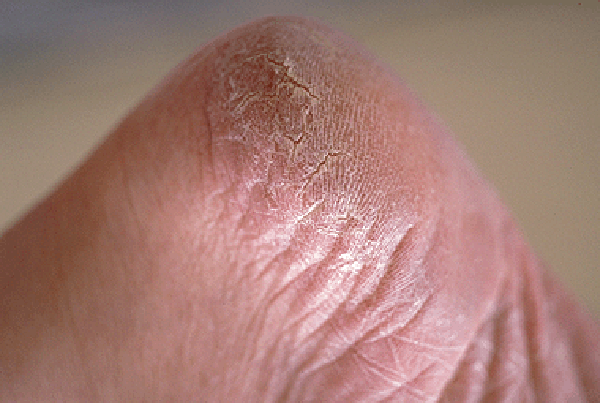Athlete’s foot is a dermatitis infection of the soles of the feet and the webs of the toes. Though it is called Athlete’s foot, it does not mean that it affects only athletes. Since athletes mostly use tight shoes and are in them for a long time, they have a greater chance of contracting the disease. But, anybody can get the disease. Again, it does not mean that the infection is only on the foot. It can spread even up to the groin. It causes flaking, scaling, itching and burning of the skin. Having a complete knowledge of the cause, symptoms and treatment can help reduce the pain and spread of infection.
Causes
Athlete’s foot is caused by a fungus. This fungus, known as Tinea pedis, starts growing on the top layer of the skin in between toes and on the soles of the feet where it is warm and moist. The disease is caused by coming in contact with the sores of the affected person. However, the most common way to contract this disease is by walking barefoot especially near the possible contaminated areas. These include swimming pools and locker rooms.
The fungi then grow and prosper in your shoes, especially if they are tight fitting. The shoes provide a fertile growth bed, being rich in body salts and moisture. Sometimes, it may happen that you come in contact with the fungus and not contract the disease. Different people have differing resistances towards Athlete’s foot. Even if you are resistant, it does not stop you from being a carrier and spreading the disease to others. Those who have contracted the disease once, have increased susceptibility to it.
Symptoms
The skin between your toes and your feet in general itch severely and cause a burning sensation if you have contracted Athlete’s foot. The skin begins to crack, peel off and burn. The symptoms shown depend of the type of disease that has affected the patient. The following are some easily observed symptoms.
a. The web between the fourth and fifth toes gets infected. The skin there begins to get scaly. Then it starts to crack and peel off. In some cases, a secondary bacterial infection also sets in. This makes the itch and burn more severe and the breakdown in the skin is more intense.
b. A little soreness on the sole of the foot can get worse and develop into a moccasin type of infection. This means that the skin that covers the sole begins to thicken and get hard. It gets very painful as it develops cracks and chunks begin to peel off. In worse cases, even the toe nails get affected. The nails too begin to crack under pressure from the fungal growth and soon crumble and fall out. Treatment for the affected toe nails is a separate method in itself.
c. A vesicular type infection can also occur where blisters grow under the surface of the skin at the bottom of the foot. When it occurs on the soles, it becomes almost impossible to even walk. These blisters can occur on any part of the foot. This happens because of the “id reaction”, which is the body’s allergic response to the fungus. Once again, this infection can get accentuated by bacteria that comes in as a secondary parasite.
Diagnosis
The doctor makes a diagnosis by simply looking at the foot. He/she will also take your past history with fungal infections. If the foot is unusually swollen and normal treatment is not helping, samples of the fungi from under the toes and nails are taken for analysis. All foot infections are not Athlete’s foot. But now that you are aware of its symptoms, go to the doctor when you have the slightest fear of having contracted the disease.
Treatment
The treatment mostly consists of anti-fungal lotions and creams that are available over the counter. In bad cases, the doctor may prescribe a few pills. It is important that you continue medication for as long as the doctor advises it. Do not discontinue because you feel that it has healed. During the treatment period, avoid keeping your feet wet. Fungi thrive in wet and warm areas. Also keep your feet away others so as to not spread the infection.
To prevent yourself from getting infected, wear shower sandals in public locker rooms and swimming pools. Also dust your legs with talcum powder to keep them dry.





